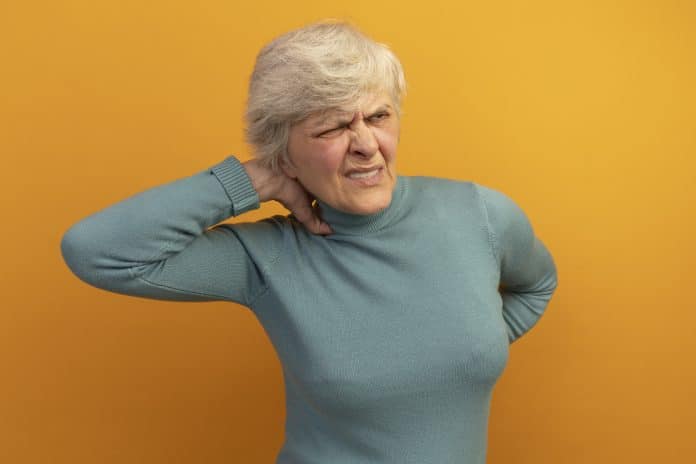As a doctor who specializes in neck pain, I have seen a surge in cases of what many are now calling “tech neck” – a condition that has become alarmingly prevalent, particularly among seniors.
Tech neck is a modern term for the neck pain and discomfort caused by prolonged, improper posture while using electronic devices – smartphones, tablets, computers or any device that requires people to lean forward and look down for long periods.
When individuals tilt their heads forward, the muscles in the neck and shoulders work harder than they should. This repetitive strain leads to muscle tightness, tension headaches, and long-term joint and spine problems.
Older adults often have unique health considerations that make them more susceptible to developing tech neck. As people age, the structures in the neck, including the discs, muscles and ligaments, begin to lose their elasticity and strength. This natural wear-and-tear makes it harder for individuals to maintain good posture and any added strain from leaning forward to look at a screen exacerbates these issues.
Additionally, many seniors suffer from degenerative conditions such as osteoarthritis, which affects the spine and joints, or cervical spondylosis, a condition where age-related wear affects the vertebrae and discs in the neck. These conditions contribute to increased discomfort when performing activities like looking down at a device.
Tech neck symptoms tend to be more subtle, often starting as a mild discomfort that gradually worsens over time. Symptoms include the following: neck pain or stiffness; pain across the shoulders; headaches; numbness or tingling; and reduced mobility.
As with any condition, prevention is key. Fortunately, seniors can make a few simple adjustments to daily habits that minimize the impact of tech neck.
-
Posture Awareness:
The ideal position is to keep screens at eye level, avoiding the need to tilt the head down. For smartphones or tablets, raise the device to eye level, rather than looking down at it.
-
Take Frequent Breaks:
Every 15-20 minutes, take a 20-second break and look at something 20 feet away.
-
Strengthening Exercises:
Regular strengthening exercises for the neck and upper back supports the spine and improves posture. Gentle stretching and strengthening routines make a difference in reducing strain.
-
Use Ergonomic Devices:
Use devices like stands or holders for tablets and phones that keep the screen at eye level. A comfortable chair with good lumbar support promotes better posture.
-
Stay Hydrated:
The discs in the neck, like all joints in the body, require hydration to function properly.
If tech neck symptoms do not improve with self-care or begin to interfere with daily activities, it is time to seek medical attention. Depending on the severity of the condition, different treatment options are available. These include: physical therapy; manual/ massage therapy; heat and cold therapy; medications; or interventions from a pain management specialist.
As individuals age, it is easy to overlook the importance of maintaining good posture and paying attention to neck related strain. By being mindful of posture, incorporating simple exercises into daily routines, and seeking professional treatment, when necessary, seniors will significantly reduce the impact of tech neck. Early intervention goes a long way to preventing long-term complications and help seniors to maintain an active, healthy and pain-free lifestyle.
About the Author:
Dr. Bestin Kuriakose is an interventional spine and pain management physician at New York Spine Institute (www.nyspine.com). He specializes in minimally invasive procedures and innovative treatment modalities aimed at improving patient outcomes and quality of life. His clinical expertise lies in the management of musculoskeletal disorders, chronic pain, and neurological conditions, where he offers comprehensive care and specialized therapeutic interventions.
























